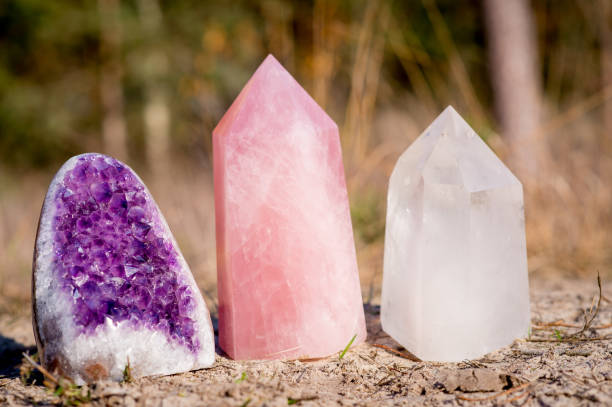What is a Natural Stone?
A natural stone is defined as a mineral, rock, or organic material that can be cut, polished, and used in various forms. It is commonly preferred in jewelry, decorative ornaments, and architectural applications. Durability, aesthetic appeal, and affordability due to being semi-precious are among the main features that make natural stones desirable (Klein & Dutrow, 2012).
In addition, natural stones are widely used in alternative medicine and energy therapies. Some beliefs hold that natural stones store electromagnetic energy accumulated over centuries and can transfer it to their surroundings, potentially influencing people and environments (Hall, 2013).
Formation of Natural Stones
Natural stones are formed by the aggregation of minerals through long-term geological processes. This formation is influenced by volcanic lava flows, earthquakes, temperature changes, pressure variations, and meteor impacts.
- Atoms combine to form elements.
- Elements combine to form minerals.
- Minerals combine to form natural stones.
The process can take thousands, or even millions, of years. During their formation, stones may store geothermal and electromagnetic energy (Mindat, 2024).
Where Are Natural Stones Found?
Different types of natural stones form under different geological conditions and are therefore found in various parts of the world. For example:
- Amethyst typically forms in volcanic rocks.
- Quartz can be found in metamorphic and igneous rocks.
- Turquoise forms in copper-rich regions (Nassau, 2001).
The mineralogical composition of the location plays a crucial role in determining a stone’s color, hardness, and patterns.
Uses of Natural Stones
Natural stones are valued not only for their beauty but also for their attributed energetic properties. They are used in:
- Jewelry and adornments (necklaces, bracelets, rings)
- Decorative objects (sculptures, table ornaments)
- Architectural applications (flooring, wall panels)
- Alternative medicine and energy work (meditation stones, chakra balancing)
When choosing natural stone jewelry, people often consider both the stone’s appearance and its associated energy qualities. For example, agate is believed to have protective qualities, while amethyst is associated with calming effects (Hall, 2013).
⸻
Conclusion
Natural stones are unique products of geological processes. They have been valued throughout history for both their aesthetic and cultural significance. Today, they remain popular for decorative purposes as well as in energy-related practices. However, the “healing” claims surrounding natural stones are supported by limited scientific evidence, and their use should be considered within the context of personal beliefs and preferences.
⸻
References
- Hall, J. (2013). The Crystal Bible. Godsfield Press.
- Klein, C., & Dutrow, B. (2012). Manual of Mineral Science. Wiley.
- Mindat. (2024). Minerals and their formation. Retrieved from https://www.mindat.org
- Nassau, K. (2001). Gemstone Enhancement. Butterworth-Heinemann.



